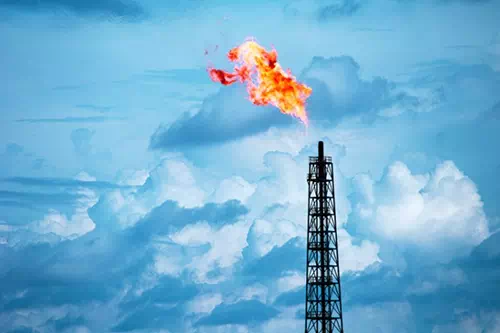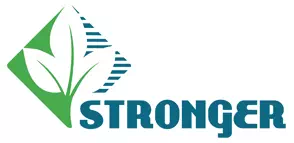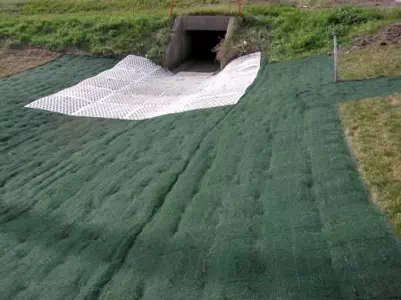

|
Stormwater Discharges
Stormwater runoff is generated when precipitation from rain and snowmelt events flows over land or impervious surfaces and does not percolate into the ground. As the runoff flows over the land or impervious surfaces (e.g., equipment, roads, parking lots, and building rooftops), it accumulates debris, chemicals, sediment or other pollutants that could adversely affect water quality if the runoff is discharged untreated. The primary method to control stormwater discharges is the use of best management practices (BMPs). Activities that take place at industrial facilities, such as material handling and storage, are often exposed to the weather and hence subject to the production of contaminated stormwater. At the federal level, 11 categories of stormwater discharges associated with industrial activity are required to be covered under an National Pollutant Discharge Elimination System (NPDES) permit (unless otherwise excluded). Two of those 11 categories are applicable to the oil and gas industry:
Oil and Gas Industry Stormwater Rules Most stormwater discharges from industrial activities require coverage under a NPDES permit. However, the Water Quality Act (WQA) of 1987 added section 402(l)(2) to the Clean Water Act (CWA) specifying that NPDES permits are not required for uncontaminated stormwater discharges from "oil and gas exploration, production, processing or treatment operations, or transmission facilities." Section 323 of the Energy Policy Act of 2005 added a new provision to the CWA defining the term "oil and gas exploration, production, processing, or treatment operations or transmission facilities" to encompass, among other things, "activities necessary to prepare a site for drilling and for the movement and placement of drilling equipment, whether or not such field activities or operations may be considered to be construction activity." From 1987 until 2005, no CWA permit was required for stormwater runoff at oil and gas exploration, production, processing and treatment operations, and transmission facilities where the runoff consisted entirely of flows from conveyances such as pipes and ditches for rainwater collection, provided that the runoff was not contaminated by contact with raw materials or wastes. In two prior phases of stormwater permitting,1990 and 1999, EPA asserted its authority to regulate certain stormwater discharges from oil and gas construction sites (i.e., sediment from the construction site constitutes a pollutant). The 1990 rule regulated activities disturbing five or more acres of land. The 1999 rule added the regulation of activities disturbing one to five acres of land. However, the Energy Policy Act of 2005 amended the CWA to provide that sediment is no longer considered a pollutant. The broadened exemption provided in the 2005 Energy Policy Act applies to all oil and gas field construction activities and operations, including those necessary to prepare a site for drilling and for the movement and placement of drilling equipment. In 2006, the EPA published a final rule that effectively exempted stormwater discharges of sediment from construction activities associated with oil and gas facilities unless the facility had a discharge of stormwater resulting in a discharge of a reportable quantity of oil or other hazardous substances 40 CFR 122.26(a)(2)(ii). This rule was challenged in court and subsequently vacated in Natural Resources Defense Council v. United States Environmental Protection Agency, 526 F.3d 591 (9th Cir. 2008). After the 2006 rule was vacated, land-based natural gas operations were subject to:
Currently, an NPDES stormwater permit is required if the gas exploration, production, processing or treatment operations or transmission facilities:
State Authorization Most states are authorized to implement the Stormwater NPDES permitting program. Since states may choose to be more stringent than EPA, please check to see if the state has imposed more requirements on stormwater discharges than that found at the federal level. EPA remains the permitting authority in a few states, territories, and on most land in Indian Country. Where EPA is the permitting authority for Categories 1 through 9 and Category 11, operators must meet the requirements of EPA's Multi-Sector General Permit (MSGP). In areas where EPA is the permitting authority for Category 10 (Construction), operators must meet the requirements of the EPA Construction General Permit (CGP). More Resources Construction Industry Compliance Assistance (CICA) Center (NCMS). Sponsored by EPA, CICA Center is a source for plain language explanations of environmental rules for the construction industry. EPA Construction General Permit (EPA). Where EPA is the permitting authority, construction stormwater discharges are almost all permitted under the Construction General Permit (CGP). This includes four entire states (Idaho, Massachusetts, New Hampshire, New Mexico), Indian Country lands within most states, areas within Colorado, Delaware, Vermont, Washington subject to construction by federal operators, limited areas of Oklahoma and Texas, and most U.S. territories. Federal Water Quality Laws and Regulations. This resource includes links to the Clean Water Act, the Safe Water Drinking Act, and associated regulations, guidelines, and policies pertinent to oil and gas surface operations. Industrial Stormwater Fact Sheet - Oil and Gas Extraction (EPA). This fact sheet specifically discusses stormwater discharges from oil and gas extraction facilities as defined by Standard Industrial Classification (SIC) Major Group 13. Municipalities and Wastewater Treatment Plants(EPA). Information on NPDES permit program areas that affect how a municipality handles its sanitary wastewater and stormwater runoff. National Pollutant Discharge Elimination System (NPDES) Permit Writers' Manual (EPA, Sept. 2010). This guidance was developed by staff within the U.S. Environmental Protection Agency's (EPA's) Office of Wastewater Management and addresses development of wastewater discharge permits under the National Pollutant Discharge Elimination System (NPDES). Natural Gas Drilling in the Marcellus Shale NPDES Program Frequently Asked Questions (March, 2011). This EPA document provides an overview of applicable regulations in a Q&A format. Regulation of Oil and Gas Construction Activities (EPA). A summary of regulatory activities affecting the oil and gas industry with respect to construction stormwater. Stormwater Discharge from Industrial Facilities (EPA). Information on federal general permits and other stormwater topics. Stormwater Discharges from Construction Activities (EPA). Information on the federal construction general permit. Stormwater Program (EPA). A general overview with links to more detailed information. The Oil and Gas Industry's Exclusions and Exemptions to Major Environmental Statutes. Summarizes, from an environmental group's perspective, oil and gas industry exemptions from provisions in the major federal environmental statutes.
|
Funded by EPA through a Cooperative Agreement
|
 |
||
About | Technical Topics | Federal Statutes & Regulations - US EPA | Federal Statutes & Regulations - Non-EPA | Emergency Response |
|
EPA Resources | State/Local Resources | Other Resources | Acronyms | Search | Disclaimer | Home




